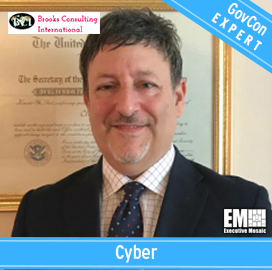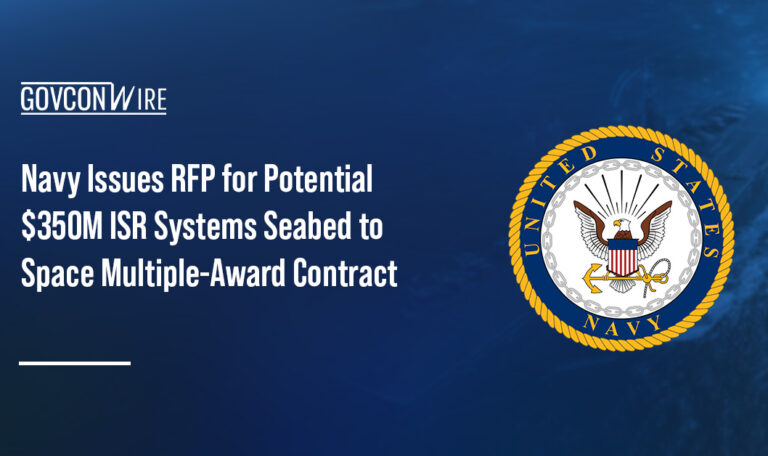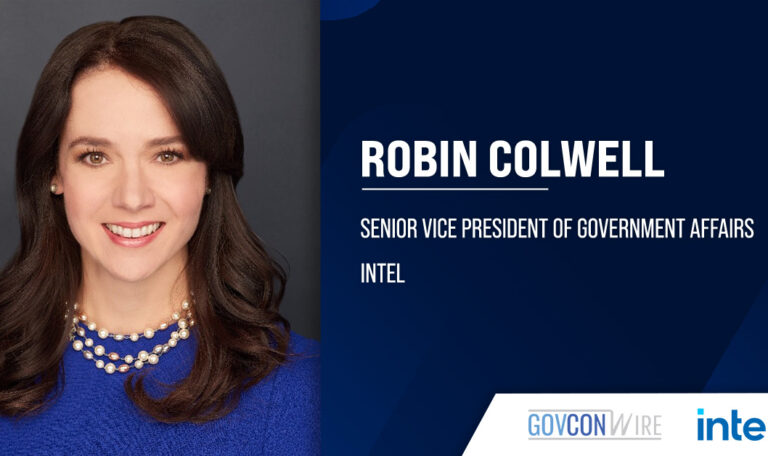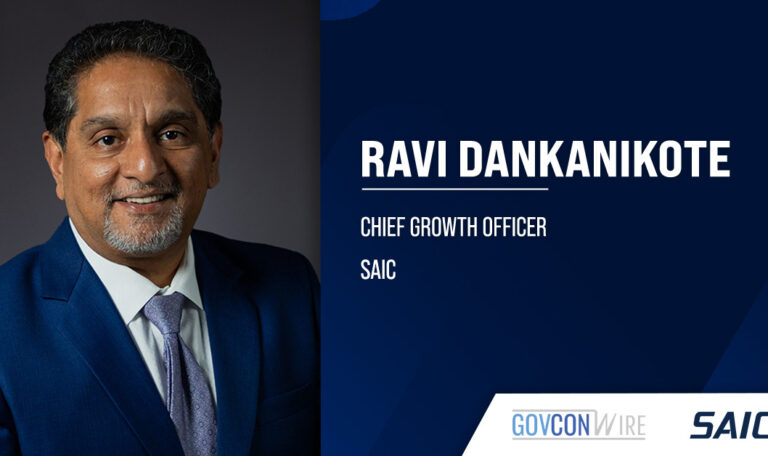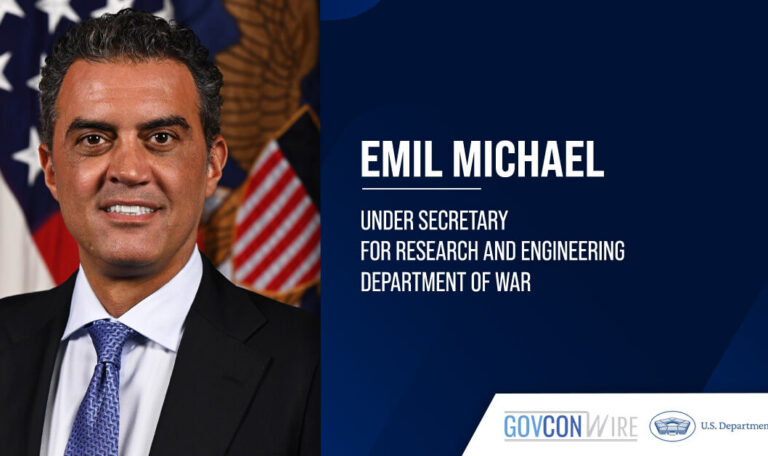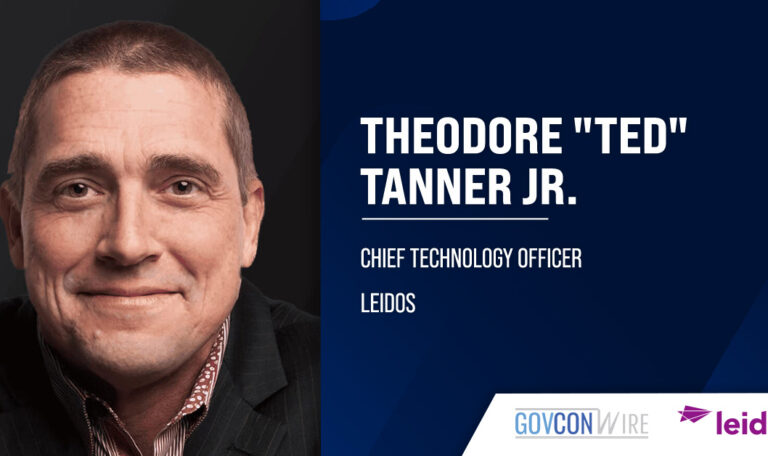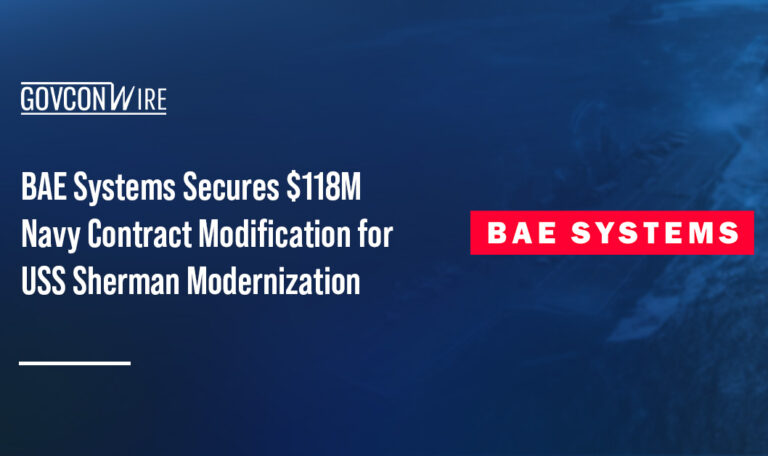GovCon Expert Chuck Brooks has published his latest feature as a member of Executive Mosaic’s GovCon Expert program on Friday exploring the various categories of the emerging technologies that are heavily influencing the federal marketplace and government heading into 2021 and beyond.
Brooks’ feature offers itself as a guide to the government contracting (GovCon) community looking to capitalize on the emerging technologies impacting the sector in the following categories, artificial intelligence, machine learning, cybersecurity, digital transformation, 5G, internet of things (IoT), quantum and high performance computing, cloud and edge computing, augmented reality, big data, virtualization, smart cities, wearables, 3D printing and material science.
You can read Chuck Brooks’ latest GovCon Expert article below:
A Guide for Emerging Technologies Impacting Government in 2021 and Beyond
By GovCon Expert Chuck Brooks
2021 and the near future that awaits can be characterized as an era of exponential technological change. It is being catalyzed by enhanced information sharing and the merging of physical and digital systems. The disruptive technological change will impact industries including health and medical care, transportation, energy, construction, finance, commerce, and security. Along with industry government is acclimating to the new emerging enterprise technology ecosystem and pursuing programmatic innovation.
For example, the White House recently Launched ‘Central Hub’ for Artificial Intelligence Research and Policymaking, the Department of Homeland Security (DHS) has a new initiative created by the Science and Technology Directorate (S&T) to launch first of its kind “Homeland Security Startup Studio” to commercialize federally funded breakthrough technologies to support homeland security mission.
The State Department has set up a bureau for cybersecurity and emerging technologies, and. And DOD is investing heavily in technology innovation among the services including with the Army Futures Command, revolved around artificial intelligence, robotics and autonomy.
In each of the emerging technology categories there is volumes of information and developing news that can be written. Below is a scorecard defining the promise of our decade that should be used as a stepping-stone to comprehend the future applications.
Note: for a more in-depth perspective of some of the emerging tech innovations prioritized by federal agencies, please see my GovCon articles:
- GovCon Expert Chuck Brooks: Fast Tracking Our Tech Future with Government
- GovCon Expert Chuck Brooks: Better Cybersecurity on 2021 Urgent Wish List for U.S. Government
- GovCon Expert Chuck Brooks: New Government Technology Initiatives To Stir Innovation
Digital transformation: Digital Transformation includes digitizing the customer experience, data flow, supply chain management, governance, engagement, e-government and virtual government. In its basic description, it is turning paper into electronic records. Going from paper-based to electronically based systems of documentation requires data collection, processing and analysis. Last year at the annual World Economic Forum meeting in DAVOS, it was announced the combined value of digital transformation — for society and the industry — could be greater than $100 trillion by 2025.
That transformation includes the immersive inclusion of digital technologies and cloud-based platforms. It also includes analytics, sensors, mobility and a new era of automation impacting all industries and verticals including financial, energy, security, communications, and health. Digital government assisted by intelligent agents: bots, digital assistants, and robotic process automation will allow for real-time citizen interactions as new digital platforms replace legacy systems.
Cybersecurity: COVID-19 has led to a digital transformation in both government and the private sectors that has necessitated employees remote work environments. Working from outside the office has changed the paradigm of cybersecurity by expanding the attack surface area. Greater digital connectivity brings risk. Phishing attacks are up 600% targeting remote workers.
It is likely that 40% of workforces will stay remote post Covid19. This fact puts supply chains at risk as every employee becomes and individual office along with every vendor that they may be working with in the chain is a potential cyber vulnerability. To help mitigate these challenges, some of the near-term cybersecurity requirements will include:
• Endpoint security: Protecting remote access to a company’s network.
• Network Security: Protecting network from unwanted users, attacks & intrusions.
• Cloud Security: Protecting from unauthorized party gaining access to an asset.
• Mobile Security: Protection from fake & malicious apps.
• Supply Chain Cyber Attacks: Protecting each component within the supply chain.
• Identity Management: Understanding the access every individual has in an organization.
Those security requirements will include a need for better encryption, authentication and biometrics. Also, because of the increased sophisticated threats, larger attack surface and lack of qualified cybersecurity personnel, cybersecurity will need to relay on emerging automation technologies, particularly with machine learning and artificial intelligence capabilities.
Technologies for “real time” horizon threat scanning and monitoring of networks and advanced defense for framework layers (network, payload, endpoint, firewalls and anti-virus) will all need technology upgrades in the new digital era. The recent Solar Winds hack that impacted almost very federal agency is a wake-up call for government on the urgency of prioritizing better cybersecurity tools and investments in people and policies to protect assets.
Artificial Intelligence/Machine Learning (AL/ML): The research firm Gartner describes artificial intelligence as a “technology that appears to emulate human performance typically by learning, coming to its own conclusions, appearing to understand complex content, engaging in natural dialogs with people, enhancing human cognitive performance or replacing people on execution of non-routine tasks.
“The promise of these technologies is very exciting. Microsoft UK’s chief envisioning officer Dave Choplin claimed that AI is “the most important technology that anybody on the planet is working on today.”
Human/computer interface breakthroughs that will extend human brain capacity and memory. Computing systems that employ AI and ML are becoming more pervasive and critical to cyber operations and have become a major focus area of cybersecurity research development and investments in both the public and private sectors.
Discovering, categorizing, synthesizing, and automating analysis of data are advantages in mitigating cybersecurity threats. In government, the Defense Advanced Research Projects Agency (DARPA), Intelligence Advanced Research Projects Activity (IARPA) and many of the National Labs are involved in researching AI uses for national security, law enforcement, healthcare, energy, and transportation.
Internet of Things: Internet of Things (IoT) refers to the general idea of things that are readable, recognizable, locatable, addressable, and/or controllable via the Internet. Most everything nowadays is connected to the internet by sensors. Cisco, who terms the “Internet of Things”, “The Internet of Everything,” predicts that 50 billion devices (including our smartphones, appliances, and office equipment) will be wirelessly connected via a network of sensors to the internet by 2021.
IoT is conjoined with the Internet of Everything (IoE) Cisco defines IoE as the networked connection of people, process, data, and things. The benefit of IoE is derived from the compound impact of connecting people, process, data, and things, and the value this increased connectedness creates as “everything” comes online. Gartner lists the pillars of IoE as: People, Data, Process, and Things. Security is and will continue be a major factor in both IoT and IoE.
Please also see my recent FORBES article: Cybersecurity Threats: The Daunting Challenge Of Securing The Internet Of Things
5G: Advanced 5G and wireless networks will benefit to government, including higher traffic capacities, lower latency, increased reliability, and by enabling processing and analytics in real-time. In government, 5G communications technology has been recognized as a foundational enabler for all U.S. defense modernization programs and a priority for other agencies. When 5G is fully implemented there will be more network traffic, there will be more and faster network wireless traffic, and there will be many more IoT devices.
In government, 5G communications technology has been recognized as a foundational enabler for all U.S. defense modernization programs. The Department of Defense (DOD) is engaged at the forefront of cutting-edge 5G testing and experimentation. DOD is committed via new research and development budgets and programs to exploring a wide range of potential applications and dual-use opportunities that can be built upon 5G next-gen networks.
Please see: 5G Is Here: Get Ready for the Cybersecurity Battles of Tomorrow by Chuck Brooks and Paul Ferrillo
The Cloud and Edge Computing: The movement of government agencies to bring data to the cloud and hybrid clouds is trending. Forecasters are estimating that a majority of data processing workloads will be located in cloud data in the next few years. The ability to securely store, prioritize, analyze and share (and scale) that data is fundamental to operations and commerce.
Because of those functional requirements, storing data in the cloud or hybrid clouds is more than prudent. Edge computing strives to bring real-time computation, data storage, and operations closer to the device, rather than relying on a central location avoiding latency issues.
Because of the growth of Internet of Things devices, and eventually smart cities, edge computing will be needed to maximize capabilities of processing speeds and reduce bandwidth requirements. Edge computing tech is already a priority for DOD strategies involving multi-domain communications and warfare.
High Performance Computing (Super & Quantum): The world of computing has witnessed seismic advancements since the invention of the electronic calculator in the 1960s. The past few years in information processing have been especially transformational in our hyper-connected world. What were once thought of as science fiction fantasies are now technological realities. Classical computing has become exponentially faster and more capable and our enabling devices smaller and more adaptable.
In today’s world, computing rules almost all that we do and much of it is already stored in The Cloud. The exponential upsurge of data and its uses directly impact the critical infrastructure of society, including health care, security, transportation, communications, and energy. We are starting to evolve beyond classical computing into a new data era called quantum computing.
It is envisioned that quantum computing will accelerate us into the future by impacting the landscape of artificial intelligence and data analytics. The quantum computing power and speed will help us solve some of the biggest and most complex challenges we face as humans. Futurist Ray Kurzweil said that mankind will be able to “expand the scope of our intelligence a billion-fold” and that “the power of computing doubles, on average, every two years.
For government agencies, Quantum technology can also be helpful in addressing network latency, interoperability, AI, real-time analytics, predictive analytics, increased storage and data memory, secure cloud computing and the emerging 5G telecommunications infrastructure.
Big Data: According to the Gartner IT Glossary, Big Data is high volume, high-velocity and high-variety information assets that demand cost effective, innovative forms of information processing for enhanced insight and decision making. to Eric Schmidt, former CEO of Google, estimated that we produce more data every other day than we did from the inception of early civilization until the year 2003 combined.
Therefore, organizing, managing and analyzing data is more important than ever. It is estimated that by 2021, there will be 35 zettabytes of digital data. Big Data is comprised of the data governance of everything including geospatial data, 3D data, audio and video, and unstructured text, and social media.
Data is everywhere flowing from the sensor networks that surround us and is the transactional roots of our activities. What, why, and how we make choices in our lives are reflected in and can be discerned through the collection, organization, and taxonomy of that data. When the extracted data is systematically combined with multi-layered analytics, it creates a forensic and predictive meaning that can be transformed into actionable insights in reporting systems.
The future of applied data analytics looms bright and the data sets of disparate information are seemingly endless. Technological R&D advances such as “machine thinking,” which will allow connected devices on the “Internet of Things” to talk to and learn from each other, will contribute immensely to the use of data analytics. Open Data sharing is also catalyzing the development of new analytical capabilities.
Smart Cities: Smart Cities integrate transportation, energy, water resources, waste collections, smart-building technologies, and security technologies and services. The term “smart city” connotes creating a public/private infrastructure to conduct activities that protect and secure citizens. This includes shared situational awareness and enabling integrated operational actions to prevent, mitigate, respond to, and recover from cyber incidents as well as crime, terrorism and natural disasters. In the past few years, cities have migrated from analog to digital and have become increasingly “smarter”.
A smart city uses digital technologies for information and communication technologies to enhance quality and performance of urban services, to reduce costs and resource consumption, and to engage more effectively and actively with its citizens. A smart city is indeed a laboratory for applied innovation. A smart city and its accompanying ecosystem can influence and impact the industrial verticals including transportation, energy, power generation, and agriculture.
The research firm Frost & Sullivan estimates the combined global market potential of smart city segments (transportation, healthcare, building, infrastructure, energy, governance) to be $1.5 Trillion ($20B by 2050 on sensors alone according to Navigant Technology).
Virtualization and Augmented Reality: The common elements that characterizes the emerging virtual digital world are exponential connectivity, collective engagement, access, and information sharing via people and objects. The technological components of the virtual world are supported by devices using sensory inputs incorporating graphics, video, sound and smell. virtual reality (VR) and augmented reality (AR) technologies are rapidly expanding across industry, academia, and government and intertwining the physical and digital worlds.
The world is going virtual and it being supported by a myriad of new and exciting technologies including artificial intelligence, augmented reality, and exponential connectivity to both people and objects. AR/VR googles are already being used in government by DOD for training, First Responders, and for healthcare.
Other interesting tech areas to watch:
Wearables: These include flexible electronics Wrist bands, rings, glasses, ear pods, contact lenses, attachable, wearable, and embedded. The trend of wearables is an emerging one with seemingly limitless possibilities. The question is no longer when wearable tech will be available, but how fast, these biometric technologies will extend human /computer interface capabilities and how ingrained in our daily lives that these technologies will ultimately become.
Wearables are being studied and used to monitor health at government run health facilities, at DOD to monitor warfighters, and by DHS for first responders and law enforcement doing the homeland security missions.
Materials Science: Exciting research in materials science are creating stronger, durable, lighter, and even “self-healing” and self-assembling materials. Nanomaterials artificially engineered at molecular scale synthetic composites are now being designed at the inter-atomic level.
The capability to design and manufacture infrastructures such as bridges, roads, buildings with stronger, adaptable, self-intelligent, and seemingly eternal materials will revolutionize the construction and transportation industries. The Department of Energy and Department of Transportation have many programs and initiatives in material sciences.
3D Printing and 4D self-assembling printing: 3-D printing is trailblazing future manufacturing. 3-D printing connotes a three-dimensional object that is created layer by layer via computer aided design) programs. To be able to print the object, the computer divides it into flat layers that are printed one by one. By printing with advanced pliable materials such as plastics, ceramics, metals, and graphene there have already been breakthroughs in prosthetics for medicine and wearable sensors.
The big advantage for government is that 3-D printing can be customized, produced rapidly and is cost-effective. The possibilities for 3-D printing are seemingly limitless. Rolls-Royce has used 3-D printing to make parts for its jet engines, and BAE Systems has stated that fighter jets containing 3-D-printed parts are now being flown.
My descriptions and overviews above are just a starting point for discovering the impact of emerging technology applications on our way of life in 2021 and beyond. There are many other areas of emerging tech such as robotics and precision medicine, that are already in large use in both the public and private sectors.
With exponential rapid transformation already occurring, and future potential being envisioned, I am happy that the government has come on board with expanding research and development in our evolving digital era.


